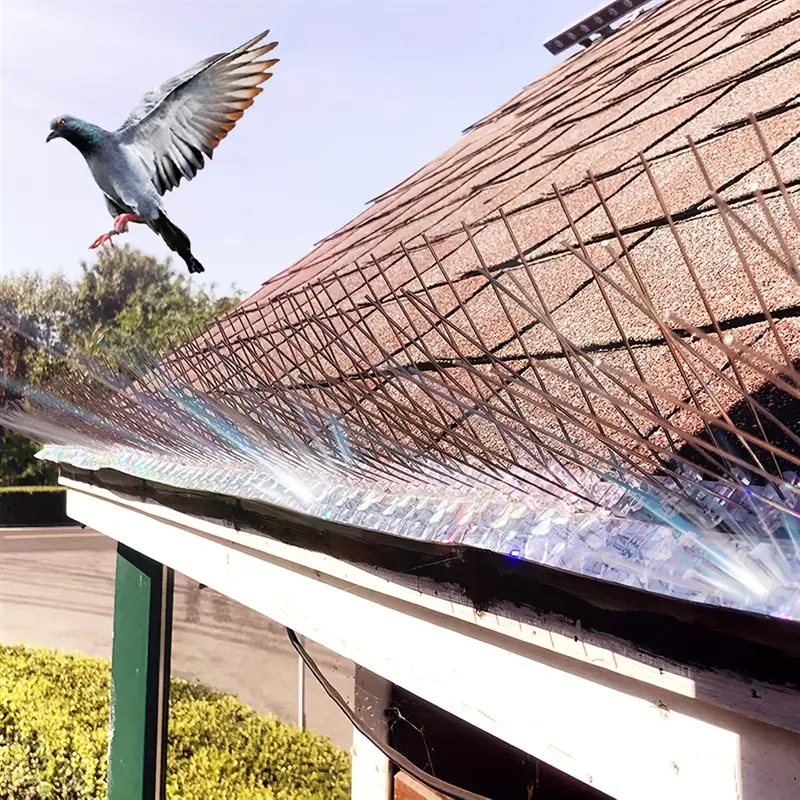Most of the time, birds become a nuisance by landing on ledges, rooftops, or balconies and depositing droppings, thereby causing damage to property. Bird spikes work effectively in keeping birds at bay. When correctly installed, they offer a humane bird-control method. However, for ultimate effectiveness, one should consider proper installation. This article guides you through easy and efficient bird spike installation tips that will help protect your property and keep birds safe.
Understanding Bird Spikes
Before installation, it is important to understand how bird spikes work. Bird spikes are long, thin rods made of stainless steel or durable plastic that prevent birds from landing on surfaces. They do not harm birds but create an uncomfortable space, discouraging them from roosting. Knowing this helps you plan the best locations for placement, ensuring the spikes cover all areas birds may attempt to perch on.
Selecting the Right Type of Bird Spikes
These spikes come in different sizes and materials, each with its unique features. Stainless steel spikes are the best for outdoor use for an extended period because it does not rust or corrode easily due to extreme weather conditions. Plastic spikes, on the other hand, are lighter and easier to maneuver, hence suitable for places that are not easily accessible. The type of birds should be considered while selecting the spikes, as larger ones such as pigeons need longer spikes, while shorter ones will suffice for smaller birds. Choosing the right type of spike ensures efficiency and limits the frequency of replacement.
Preparing the Installation Area
Proper preparation of the surface is essential for secure installation. Clean the area thoroughly to remove dirt, bird droppings, and debris. A clean surface allows adhesives to bond properly, ensuring that the spikes stay in place for an extended period. For metal or concrete surfaces, using a degreaser can help remove stubborn residues. Measuring the installation area accurately ensures you cut the spikes to the correct size, avoiding gaps that birds could exploit.
Choosing the Right Installation Method
There are two main installation methods for bird spikes: adhesive attachment and screw or nail mounting. Adhesive is suitable for smooth surfaces like window ledges and signs, providing a clean and quick installation. Ensure you use a high-quality, weather-resistant adhesive to prevent spikes from coming loose. For rough or uneven surfaces, screws or bird spikes in dubai nails provide a more secure attachment. Using the correct method for each surface ensures that the spikes remain effective and durable over time.
Installing Bird Spikes Step by Step
Start by arranging the spikes along the surface, making sure each section fits tightly against the adjacent one. If you need to cut any spikes, employ a hacksaw for metal ones or sturdy scissors for plastic varieties—aim for clean cuts to preserve their effectiveness. Apply glue at the base of the spikes or drill pilot holes if you're using screws. Firmly press each spike into position and hold it in place for several seconds to let the adhesive set. When using screws, ensure that each spike is secured evenly while checking their alignment and stability. Maintaining consistent spacing and straight alignment is essential to avoid leaving gaps where birds could potentially land.
Ensuring Long-Term Effectiveness
To maintain the effectiveness of bird spikes, regular inspections are necessary. Check for any loosened spikes, debris accumulation, or damaged sections that may reduce their efficiency. Cleaning the spikes occasionally with water or a soft brush helps remove dust and bird droppings, keeping them functional. Replacing damaged spikes promptly ensures that the deterrent remains reliable and continues to protect your property effectively.
Safety Considerations
While bird spikes are generally safe, it is important to handle them with care during installation. Wear gloves to prevent injury from sharp points and take precautions when working on high surfaces. Using a stable ladder or scaffolding ensures safe access to rooftops and ledges. Additionally, avoid placing spikes in areas where they could inadvertently harm humans or pets, keeping them confined to areas where birds are the primary concern.
Benefits of Proper Installation
Properly installed bird spikes provide several benefits. They deter birds from nesting and roosting, reducing property damage and maintenance costs. They are a humane solution that avoids harming birds, offering a long-term deterrent without the need for constant intervention. Efficient installation saves time and effort, ensuring that your property remains protected with minimal ongoing maintenance.
Conclusion
Bird spikes are a practical and humane way to prevent birds from causing damage to your property. By understanding the types of spikes, preparing the area carefully, choosing the right installation method, and maintaining the spikes, you can achieve an easy and efficient installation. With proper planning and attention to detail, bird spikes will effectively keep your outdoor spaces clean and safe, offering a reliable solution for bird control.
